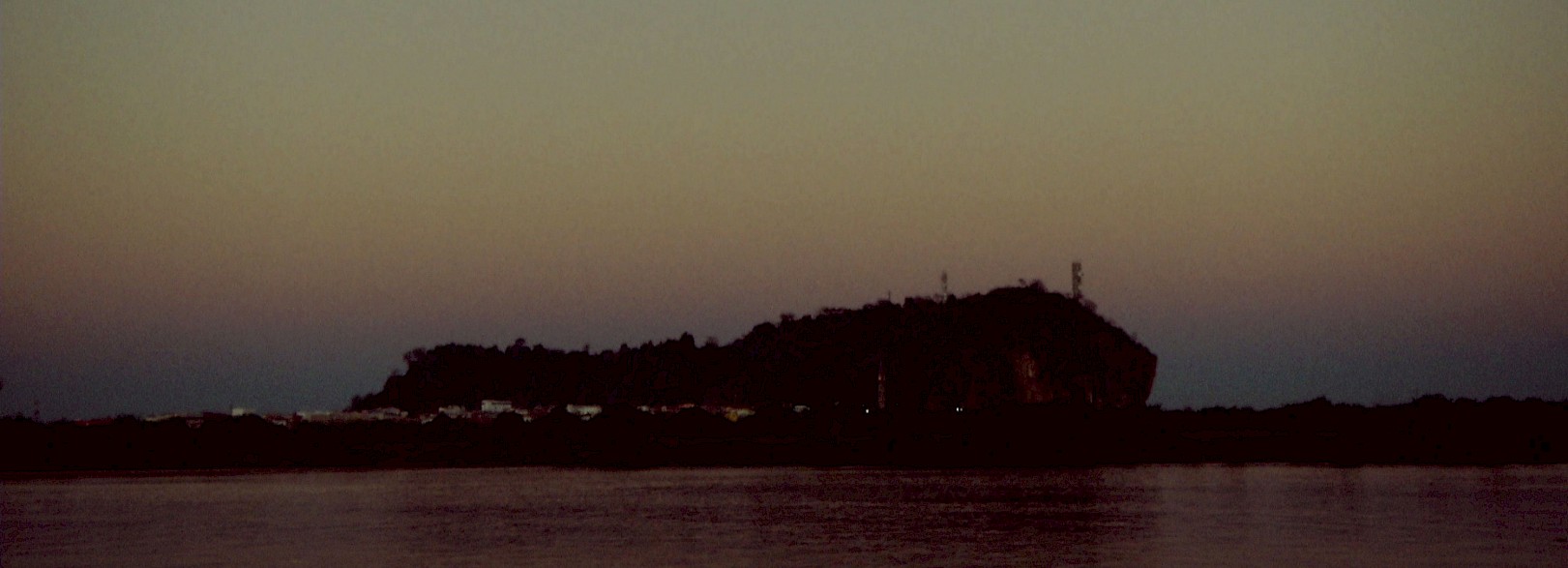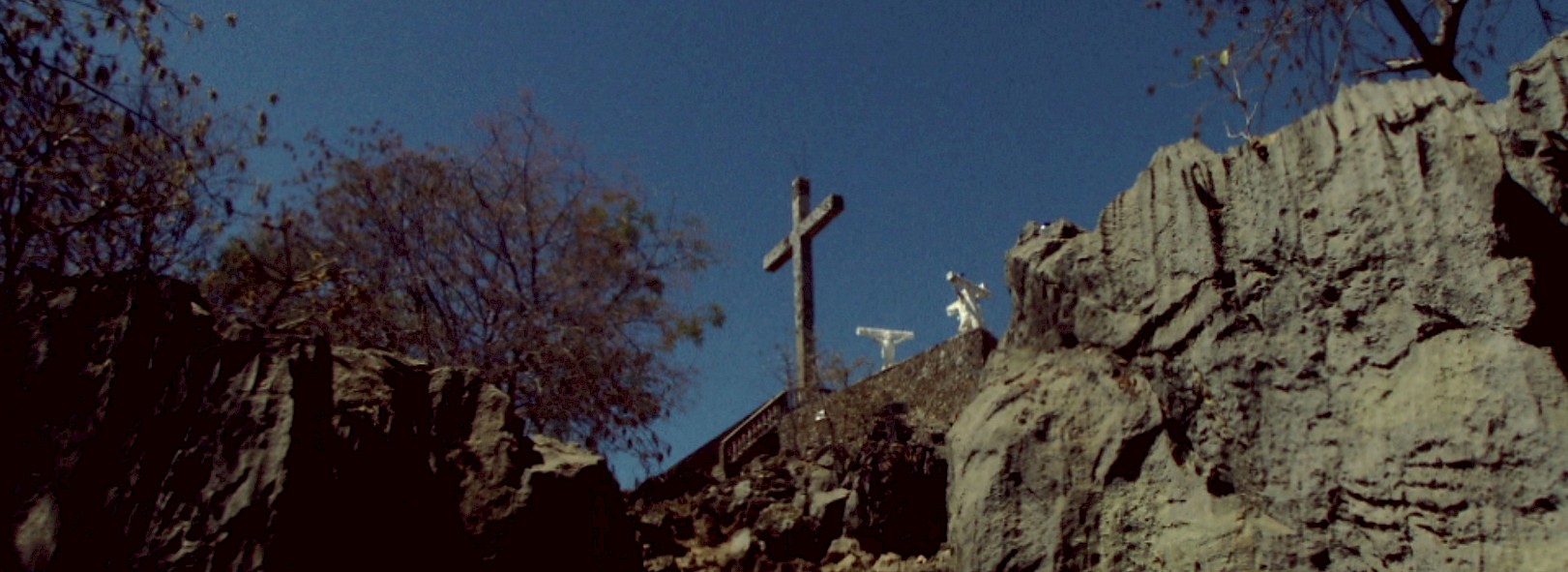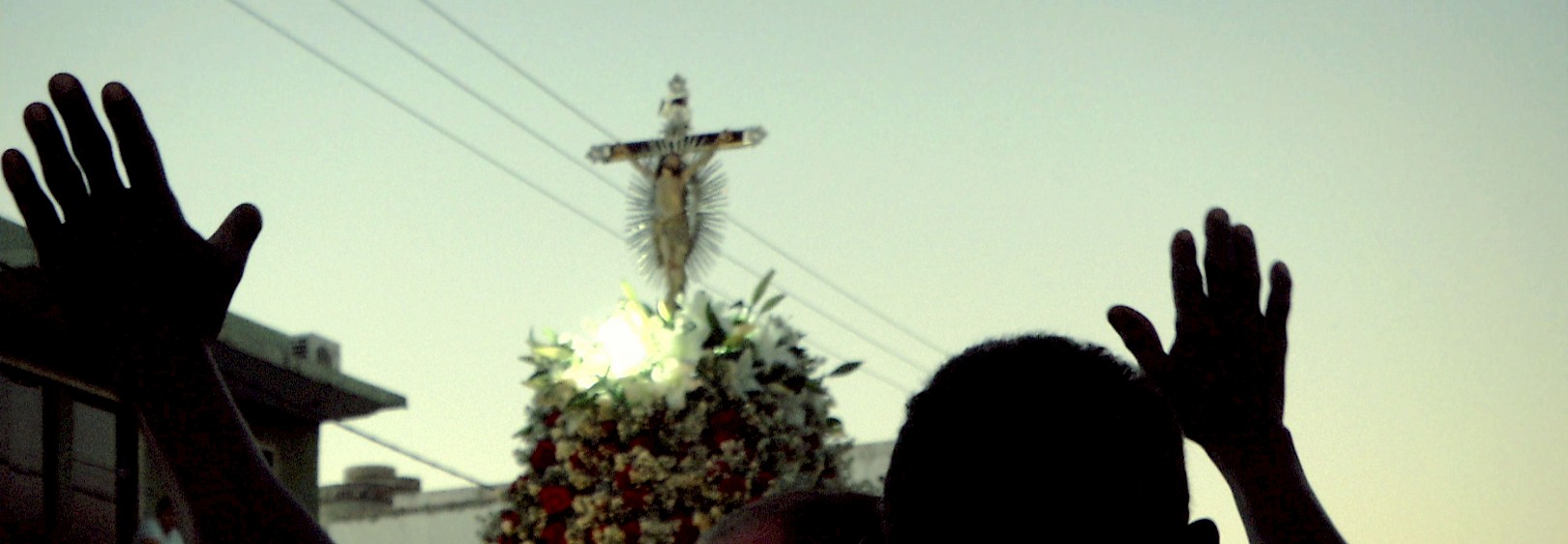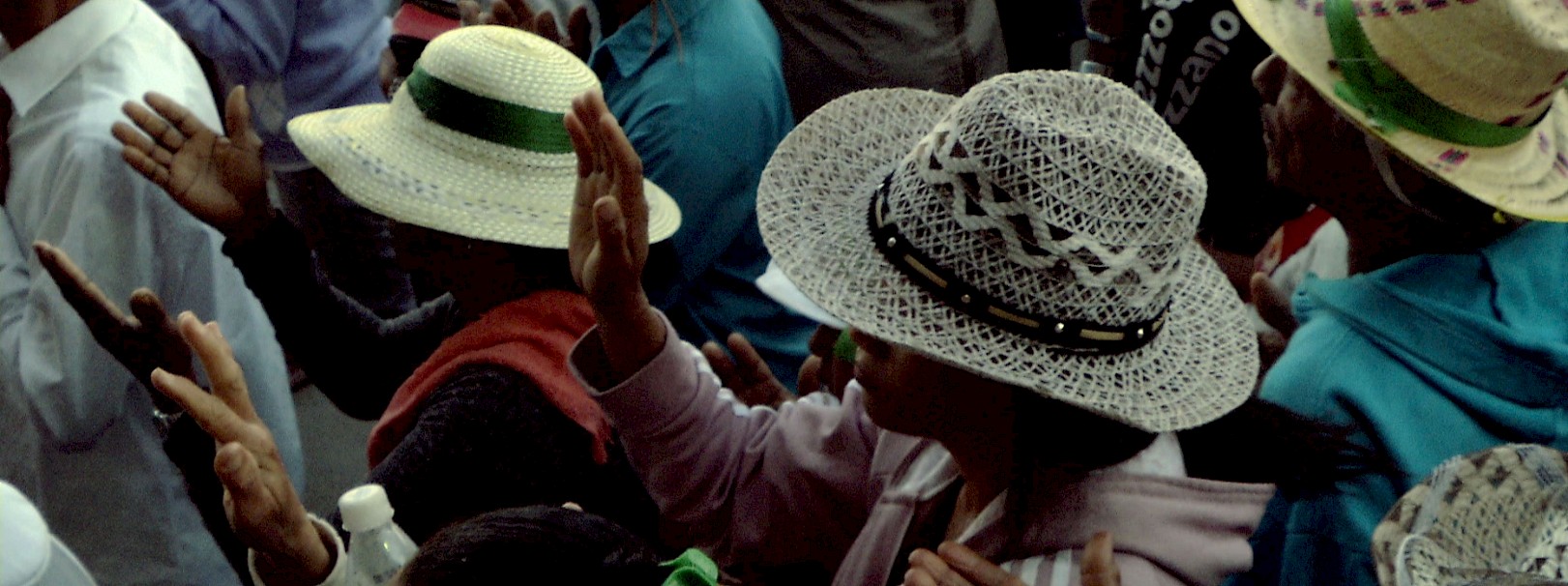Bom Jesus da Lapa
20:59
Pilgrimage to Bom Jesus da Lapa. Catholicism. Bom Jesus da Lapa. Bahia. August 1, 2015. 700 thousand pilgrims every year since the 1600s
Pilgrimage to Bom Jesus da Lapa
More than seven hundred kilometers into northeastern Brazil’s backcountry, a man walks alone holding two images and a great deal of hope in his arms: Our Lord Good Jesus and Our Lady of Sorrows shall light his way. Following along the shores of yet another saint, the São Francisco River, he’s in search of a new story for his life. He searches and searches, until he reaches an astounding horizon formed by a hill standing ninety meters tall where nine caves sheltered a group of jaguars: he makes his home with the indigenous tribe Tapuia, surrounded by rocks as solid as his faith.

“Nothing can stop us when we’re guided by faith”
Priest from Bom Jesus da Lapa
It all took place in the 17th century and the name of this wanderer is Francisco de Mendonça Mar. Born into a family of goldsmiths in Lisbon, he was the only one who decided to set sail toward the other side of the Atlantic. He set up shop in Salvador, where he soon became known as a skilled painter and artist. Such fame brought about an invitation to paint the Palace of the Governor General of Brazil, as requested by the President himself, Governor Matias da Cunha. The job was carefully completed, but as payment he received a warrant for his arrest. It took a letter to the King of Portugal to regain his freedom. From the prison to the cave where he started building his life as a hermit priest, he only brought the Good Jesus and the Lady of Sorrows… but this Portuguese man with the fiber of a backcountry man would never be alone again.
“Who goes there?
Who goes there?
Who goes there marching by Jesus?
Who goes there?”
Worship song at the pilgrimage

Even though he’d chosen the most obscure of all pinholes to live in, the light from the candles and the strength of his prayers demanded attention. It was in the times of miners leaving the Northeast for the gold of Minas Gerais. Travelers would come by to meet him, and the sick and poor would get sheltered. Drinking the water dripping from the cracks in the rocks also caused for many miracles and cures to sprout from this story. At last, after so many people had come, a village was formed and it is now the Faith Capital of Bahia.

About seven hundred thousand pilgrims come each year to follow in the footsteps of Francisco Mar: the priest who died after living sixty-five years of a life devoted to the simple folk and pilgrims, like himself. Coming from Bahia and all the corners of Brazil, on foot or by bus, countless visitors reach the cave that today houses the Sanctuary of Good Jesus (Santuário de Bom Jesus). These paths are ingrained in the upbringing of children born into Catholic families; this scenery is in the minds of those Brazilians who have something to be thankful for.
“When I first came with my parents, the trip was very pleasant.
We ate rapadura and cassava flour on the way here”
Pilgrim in Bom Jesus da Lapa

This is where, each year from July 28 through August 6, one of the largest pilgrimages in Brazil takes place, encompassing almost ten days of pilgrimage, masses, and fulfilling promises in appreciation of Bom Jesus da Lapa. The pilgrims retrace father Francisco’s gestures, gathering in the cave for hours and hours of prayers with the native, quilombolas and travelers: the Sanctuary revives the times of litanies, and its walls and waters are celebrated as magical and sacred elements for these Christian people.

It’s a very special moment, one of good energy and gratitude. This is when many pilgrims from the southern region or Bahia arrive: their hats, patterned clothes, and smiling eyes are a lesson on composition. Even if the sun is beaming down on their heads when they arrive, paying dues on their knees or carrying old vows that have been fulfilled, they use singing and everyday language to show their gratitude. Around the Sanctuary and throughout their paths, they talk to Catholic saints as if to a friend, they feel close and embraced in this recognition through simplicity.

Hands up in the air, clapping, blowing horns. The tears sprouting from the eyes of the believers is like the sacred water on the walls of the cave, the river flowing along also has that desire for hope. Dripping water that is like the salty sweat of so many Franciscos who didn’t give up on seeing and being inspiration: drop after drop, this is how the backcountry people make their way in Brazil.
“I will love You, Lord!
I will love You, Lord!
I can only find peace and joy this close to You”
Worship song at mass
Outtakes
The Blessing Woman
02:41
